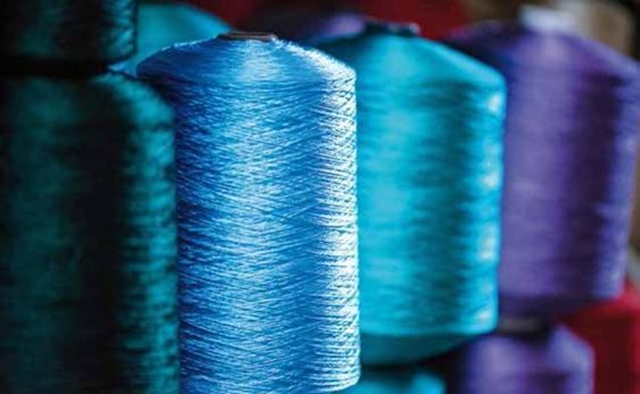SAM
Published:2019-11-27 22:44:14 BdST
Artificial fibre import doubles in five years
FT ONLINE
Import of manmade fibre (MMF), especially polyester and viscose, has doubled since 2014, showing a gradual shifting of the country's RMG industry to use of non-cotton fibre in manufacturing apparel items, sources said.
Readymade garment (RMG) sector leaders, however, argued that though the use of MMF is increasing along with cotton import, the growth is still not up to the desired level considering the global market potentials.
With the increase of earnings through RMG export over the decades, the consumption of cotton has also been on the rise and still the majority of the exportable RMG items are based on cotton, they said.
According to the Bangladesh Textile Mills Association (BTMA), the import of MMF like a polyester staple, viscose and Tencel is on the rise following the rising demand amid changes in the global fashion trend.
The country imported 102,219 tonnes of polyester staple fibre in 2018 as compared to 51,729 tonnes in 2014, according to BTMA data.
Some 77 mills imported polyester last year while the number of such mills was only 42 in 2014.
The import of viscose staple fibre was recorded at 40,278 tonnes in 2018, which was only 18,115 tonnes in 2014.
BTMA data showed that viscose fibre importing mills also went up to 50 from 28 during the period.
The country imported 87,950 tonnes of polyester and 47,923 tonnes of viscose fibre during January to October period of 2019, it showed.
About 6,847 tonnes of Tencel - a fibre made of trees, leaves and flax fibre - has also been imported by local mills during this period which was 5,034 tonnes in 2014, according to BTMA.
In fiscal 2018-19, Bangladesh imported 6.9 million bales of cotton from the world to meet its demand. The country annually spends US$ 3.5 billion in importing cotton.
BTMA president Md Ali Khokon said the data indicated that the use of MMF is increasing and such artificial fibre use is opening the scope of diversification.
He, however, stressed the need for both local and foreign investment in this segment, especially in woven sub-sector, to encourage diversification of textile and RMG products.
When asked, Bangladesh Garment Manufacturers and Exporters Association (BGMEA) president Dr. Rubana Huq said: "It's encouraging to see the steady growth trend of MMF and other non-cotton fibre imports in Bangladesh."
The data absolutely indicates the growing capacity of Bangladesh in the non-cotton textile manufacturing sector which is the future of Bangladesh, she said.
She, however, stressed on looking into the long-term growth trajectory of non-cotton textile and apparel exports from Bangladesh to have a clear understanding of the comparative performance of cotton vis-a-vis non-cotton.
In the last 10 years, Bangladesh's RMG export grew by 176 percent from $12.35 billion to $34.13 billion.
The growth of cotton-based garment export during the same period was 198 percent and for non-cotton items, it was 128 percent, Ms. Huq noted.
"So, there has been an incremental growth of non-cotton, but perhaps the growth pace could have been better. We see the pace is getting accelerated in recent years," the BGMEA's first female president said.
Export of cotton-based garments grew by 10 percent in the last fiscal year, while the growth of non-cotton garments export was 15 percent.
Yet, the ratio of non-cotton to cotton-based garment stood 26 percent in the last fiscal which was 31 percent in FY2008-09.
About 74.14 percent of the $34.13 billion locally manufactured RMG items exported in the last fiscal year (FY '19) are made of cotton, according to the BGMEA data.
In FY 2008-09, the country fetched $12.34 billion from RMG exports out of which 68.67 percent of the items were made of cotton, it showed.
It is important to note that the share of cotton in global clothing consumption is around 35 percent and rest are MMF or other vegetables/ animal fibre, Ms. Huq said.
Only MMF secures around 45 percent share in global clothing, the BGMEA president said, adding that the demand for MMF is increasing since the products are more durable, fashionable and sustainable than cotton.
Therefore, she added, Bangladesh has clear potential to tap on the non-cotton segment of the market.
"To that end such development in polyester, viscose and other fibres is encouraging, and we need to promote and attract more investments in these sectors to make our foundation stronger for diversification and value addition," she said.
Unauthorized use or reproduction of The Finance Today content for commercial purposes is strictly prohibited.


